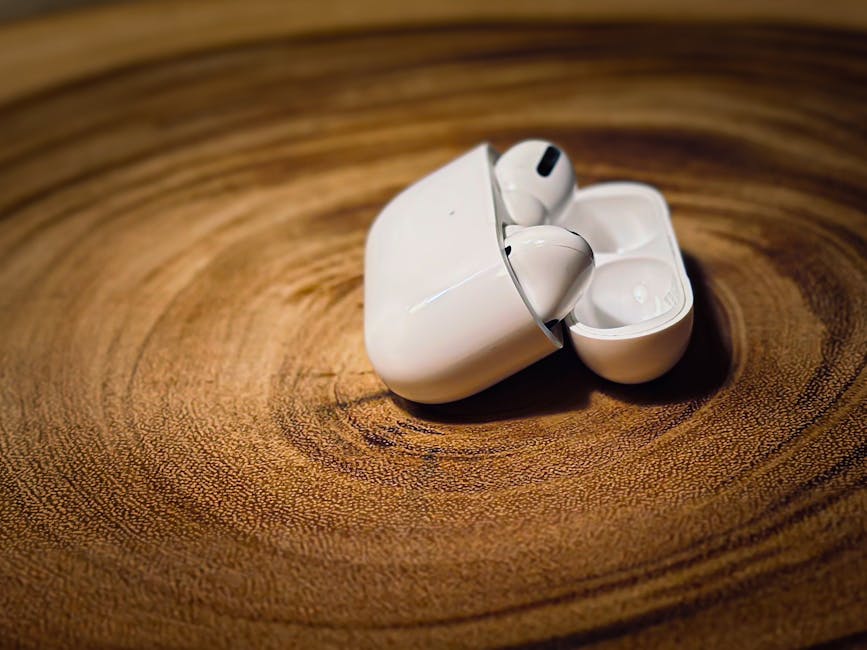
Preventing Burnout Through Self-Care Routines
Preventing Burnout Through Self-Care Routines
In today’s fast-paced world, burnout has become an increasingly common issue affecting people across various professions and lifestyles. Characterized by emotional exhaustion, reduced performance, and a sense of detachment, burnout can severely impact both mental and physical health. The good news is that incorporating self-care routines into your daily life can help prevent burnout and restore balance. This guide explores practical strategies to build sustainable self-care habits that promote well-being and resilience.
Understanding Burnout
Before diving into prevention strategies, it’s essential to recognize what burnout is and how it manifests. Burnout is more than just feeling tired—it’s a state of chronic stress that leads to:
- Emotional exhaustion – Feeling drained and unable to cope
- Cynicism and detachment – Losing interest in work or personal relationships
- Reduced performance – Struggling with focus, creativity, and productivity
Common causes include excessive workloads, lack of control over responsibilities, and insufficient work-life balance. By identifying early warning signs, you can take proactive steps to prevent burnout before it takes hold.
The Role of Self-Care in Preventing Burnout
Self-care is not just about pampering yourself—it’s about maintaining your physical, emotional, and mental health. A well-rounded self-care routine helps:
- Reduce stress – Managing stress levels prevents chronic tension
- Improve resilience – Strengthening your ability to handle challenges
- Restore energy – Replenishing mental and physical stamina
The key is consistency. Small, daily self-care practices are more effective than occasional indulgences.
Essential Self-Care Practices to Prevent Burnout
1. Prioritize Sleep and Rest
Quality sleep is foundational for mental clarity and emotional stability. To improve sleep hygiene:
- Stick to a regular sleep schedule
- Create a calming bedtime routine (e.g., reading, meditation)
- Limit screen time before bed
Additionally, incorporate short breaks throughout the day to recharge—whether it’s a 10-minute walk or a power nap.
2. Establish Healthy Boundaries
One of the leading causes of burnout is overcommitment. Learning to say “no” and setting clear boundaries can protect your energy.
- Communicate your limits at work and in personal relationships
- Schedule downtime and honor it as non-negotiable
- Delegate tasks when possible
3. Engage in Physical Activity
Exercise is a powerful stress reliever. You don’t need intense workouts—consistent movement is what matters.
- Find activities you enjoy (yoga, dancing, hiking)
- Aim for at least 30 minutes of moderate exercise daily
- Use movement as a mental break, not just a physical one
4. Practice Mindfulness and Relaxation Techniques
Mindfulness helps ground you in the present moment, reducing anxiety and overwhelm. Techniques include:
- Meditation – Even 5-10 minutes daily can make a difference
- Deep breathing exercises – Helps calm the nervous system
- Journaling – Writing down thoughts can provide clarity and release stress
5. Nourish Your Body with Balanced Nutrition
What you eat affects your mood and energy levels. Focus on:
- Whole, nutrient-dense foods (fruits, vegetables, lean proteins)
- Staying hydrated throughout the day
- Limiting excessive caffeine and sugar, which can lead to energy crashes
6. Cultivate Meaningful Connections
Social support is crucial for emotional well-being. Make time for:
- Quality conversations with friends and family
- Joining communities with shared interests
- Seeking professional support if needed (therapy or coaching)
7. Engage in Activities That Bring Joy
Burnout often stems from losing touch with what makes you happy. Schedule time for hobbies and passions, whether it’s:
- Reading, painting, or playing music
- Exploring nature or traveling
- Learning something new
Creating a Sustainable Self-Care Routine
The most effective self-care routine is one tailored to your needs and lifestyle. Follow these steps to build a personalized plan:
- Assess Your Needs – Identify areas where you feel most depleted (e.g., sleep, social life, work stress).
- Start Small – Introduce one or two practices at a time to avoid overwhelm.
- Schedule It – Treat self-care like an important appointment.
- Track Progress – Reflect on what works and adjust as needed.
Overcoming Common Self-Care Obstacles
Many people struggle with maintaining self-care due to:
- Guilt – Feeling selfish for prioritizing yourself
- Time constraints – Believing there’s no room in a busy schedule
- Inconsistency – Starting strong but losing momentum
To overcome these barriers:
- Remind yourself that self-care is necessary, not indulgent
- Integrate small habits (e.g., deep breathing during commutes)
- Use reminders or accountability partners
Final Thoughts
Preventing burnout isn’t about avoiding stress altogether—it’s about building resilience through intentional self-care. By prioritizing rest, setting boundaries, staying active, and nurturing joy, you can create a sustainable lifestyle that protects against burnout. Start small, stay consistent, and remember: taking care of yourself is the foundation for a healthier, happier life.
Would you like additional tips on specific self-care techniques? Let us know in the comments!# Preventing Burnout Through Self-Care Routines
In our hyper-connected, always-on world, burnout has reached epidemic proportions. The World Health Organization now recognizes burnout as an occupational phenomenon, but its effects extend far beyond the workplace. Chronic stress, emotional exhaustion, and diminishing performance can infiltrate every aspect of our lives. The antidote? A robust, personalized self-care routine that goes beyond bubble baths and scented candles to address the root causes of burnout.
Understanding the Burnout Spectrum
Burnout doesn’t happen overnight – it creeps in gradually through predictable stages:
- The Honeymoon Phase: Enthusiasm and high energy, often accompanied by unrealistic expectations
- Onset of Stress: Noticeable dips in productivity and increasing irritability
- Chronic Stress: Physical symptoms emerge (headaches, insomnia, fatigue)
- Burnout: Complete emotional and physical exhaustion
- Habitual Burnout: Chronic condition affecting health and relationships
Recognizing where you fall on this spectrum is crucial for implementing the right self-care strategies.
The Neuroscience of Self-Care
Modern research reveals why self-care works at a biological level:
- Cortisol regulation: Proper self-care helps maintain healthy stress hormone levels
- Neuroplasticity: Positive routines literally rewire your brain for resilience
- Vagus nerve stimulation: Certain self-care practices activate the body’s relaxation response
This scientific foundation explains why seemingly simple self-care practices can have profound effects on burnout prevention.
Customizing Your Self-Care Toolkit
Effective self-care isn’t one-size-fits-all. Consider these personalized approaches:
For Mental Exhaustion:
- Digital detox hours
- Puzzle games or creative hobbies
- Learning something unrelated to work
For Emotional Drain:
- Gratitude journaling
- Therapy or support groups
- Comfort media (books, shows, or music that soothes)
For Physical Depletion:
- Progressive muscle relaxation
- Hydration tracking
- Gentle movement like tai chi or swimming
The 5 Pillars of Sustainable Self-Care
- Preventative Care: Daily habits that maintain baseline wellness
- Emergency Care: Quick fixes for stressful moments
- Restorative Care: Deeper practices for recovery
- Social Care: Nurturing meaningful connections
- Professional Care: Knowing when to seek expert help
Implementing Your Routine
Morning Anchors:
- 5 minutes of intentional breathing
- Sunlight exposure within first hour of waking
- Protein-rich breakfast
Midday Resets:
- Pomodoro technique with proper breaks
- Walking meetings when possible
- Hydration check-ins
Evening Wind-Down:
- Digital sunset (no screens 1 hour before bed)
- Reflection practice (3 good things exercise)
- Preparing for the next day to reduce morning stress
Measuring Self-Care Effectiveness
Track these metrics to ensure your routine works:
- Energy levels throughout the day
- Sleep quality and duration
- Frequency of positive vs. negative thoughts
- Physical symptoms (tension, headaches, etc.)
- Productivity and focus metrics
Overcoming Common Barriers
“I don’t have time”: Start with 5-minute micro-practices
“It feels selfish”: Reframe as “filling your cup to pour for others”
“I keep forgetting”: Pair with existing habits (e.g., brushing teeth = do one stretch)
Advanced Self-Care Strategies
For those already practicing basics:
- Biofeedback training
- Sensory deprivation floats
- Forest bathing (shinrin-yoku)
- Creative arts therapy
- Volunteer work (paradoxically restorative)
When Self-Care Isn’t Enough
Recognize when you need:
- Professional mental health support
- Significant lifestyle changes
- Medical evaluation for underlying conditions
The Long Game: Building Resilience
Ultimately, self-care for burnout prevention is about creating a life where:
- Work serves you, not vice versa
- Rest is respected as much as productivity
- Your needs are prioritized, not postponed
Remember: Preventing burnout isn’t about doing more – it’s about being more intentional with what you already do. Start small, stay consistent, and let your self-care practice evolve as you do. Your future self will thank you.







